Abstract
1. Mechanical and intracellular electrical activities were recorded simultaneously from canine fundal and antral smooth muscle preparations.
2. Most fundal preparations displayed no spontaneous electrical or mechanical activity. The tissue had a space constant of 1·5 mm and a time constant of 189 msec and showed outward rectification in response to depolarizing current.
3. Transmural nerve stimulation of fundal preparations demonstrated the presence of cholinergic excitatory and non-cholinergic, non-adrenergic inhibitory neural inputs to the tissue. The cholinergic nerve response consisted of a small, graded depolarization accompanied by a slow graded contraction; the inhibitory nerve response consisted of a graded hyperpolarization accompanied by a slow relaxation.
4. The excitatory fundal nerve response was abolished or greatly diminished by D600 and Mn2+. D600 and Mn2+ also decreased basal tone. The inhibitory nerve response was unaffected by either agent.
5. The excitatory nerve response in the fundus was contrasted with the excitatory nerve response in the antrum. In the fundus, stimulation of cholinergic motor nerves produced a depolarization which always produced a contraction. In the antrum, stimulation of cholinergic motor nerves between action potentials produced graded depolarizations of antral cells; however, there were no associated contractions. Stimulation of cholinergic motor nerves during spontaneous action potentials increased the amplitude and duration of the plateau phase of the action potential; this was associated with an augmentation of the spontaneous contractions.
6. Voltage—tension curves were determined for antral and fundal preparations using K+ depolarization as a means of controlling membrane potential. Antral preparations displayed a voltage threshold for contraction at a membrane potential approximately 30 m V positive to the resting potential. In cntrast, fundal resting potentials were at or more positive than their voltage thresholds.
7. These differences in electromechanical coupling provide an explanation for the marked differences in the responses of fundal and antral smooth muscles to nerve stimulation and account for their physiologic function in vivo.
Full text
PDF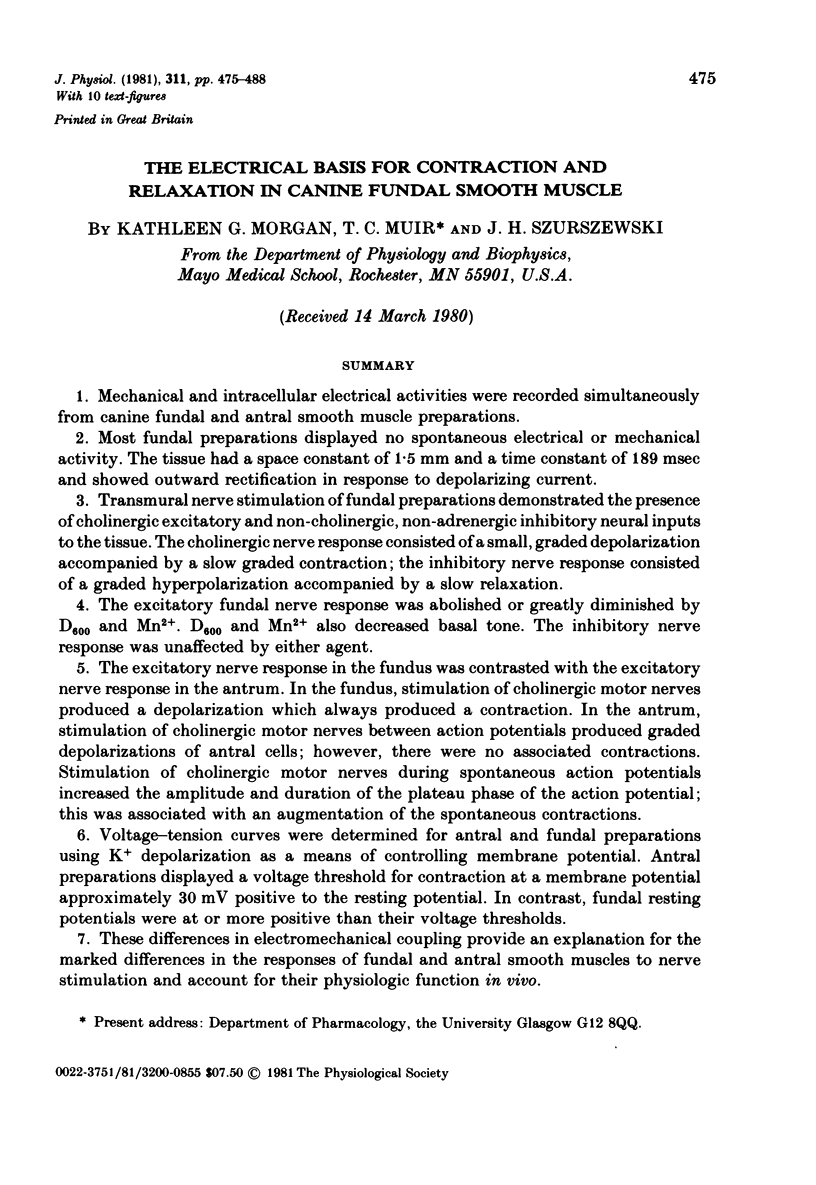
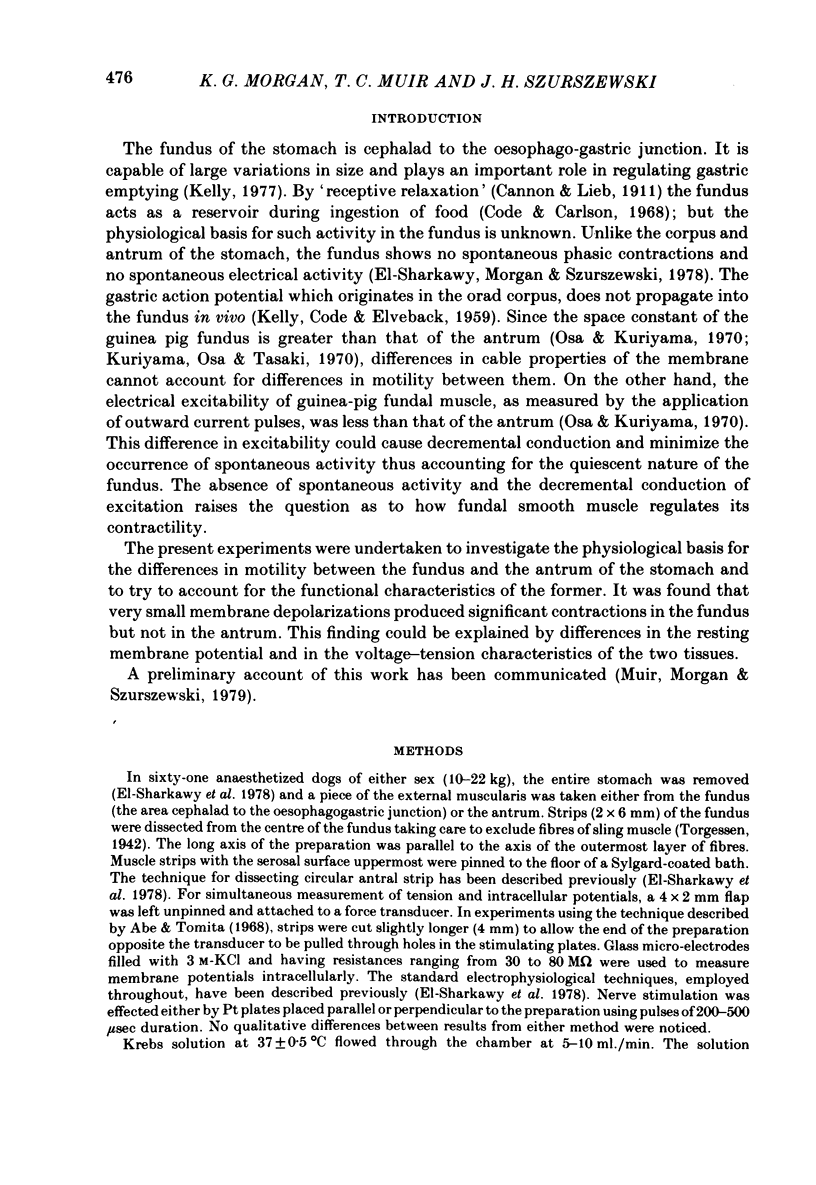
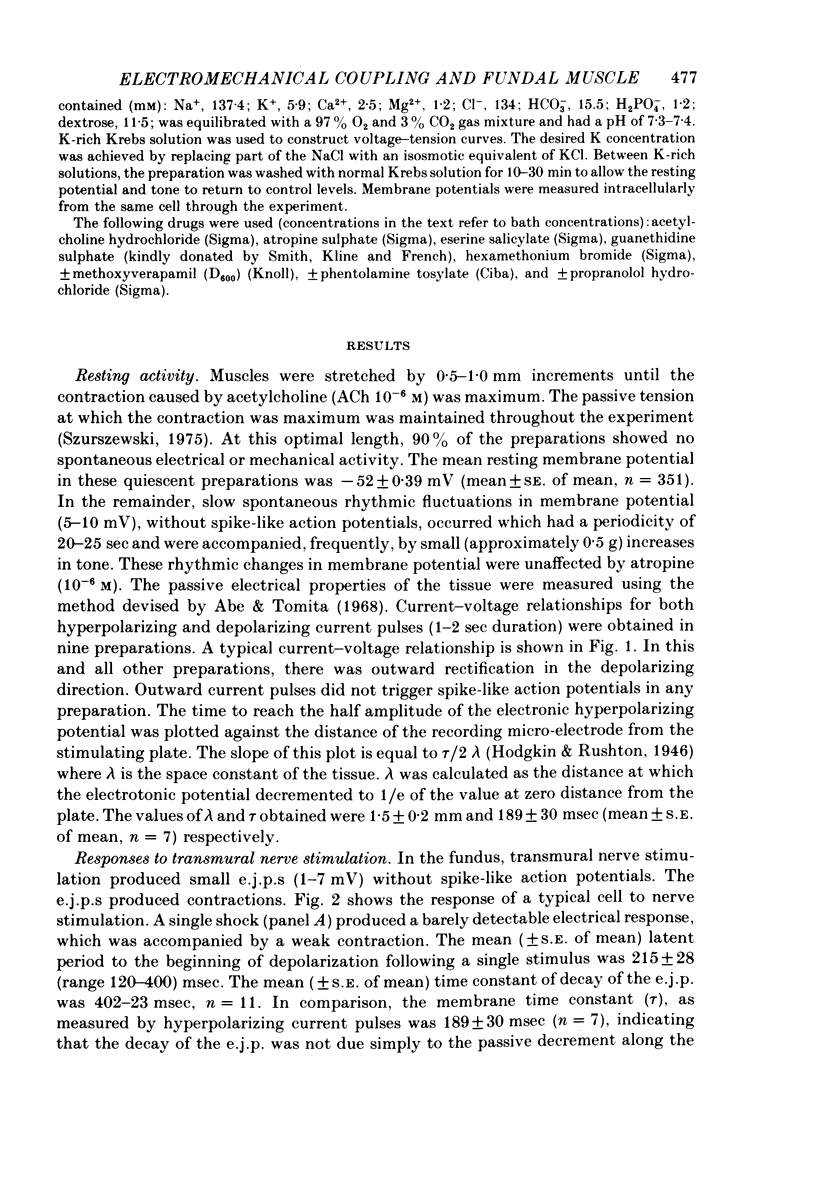
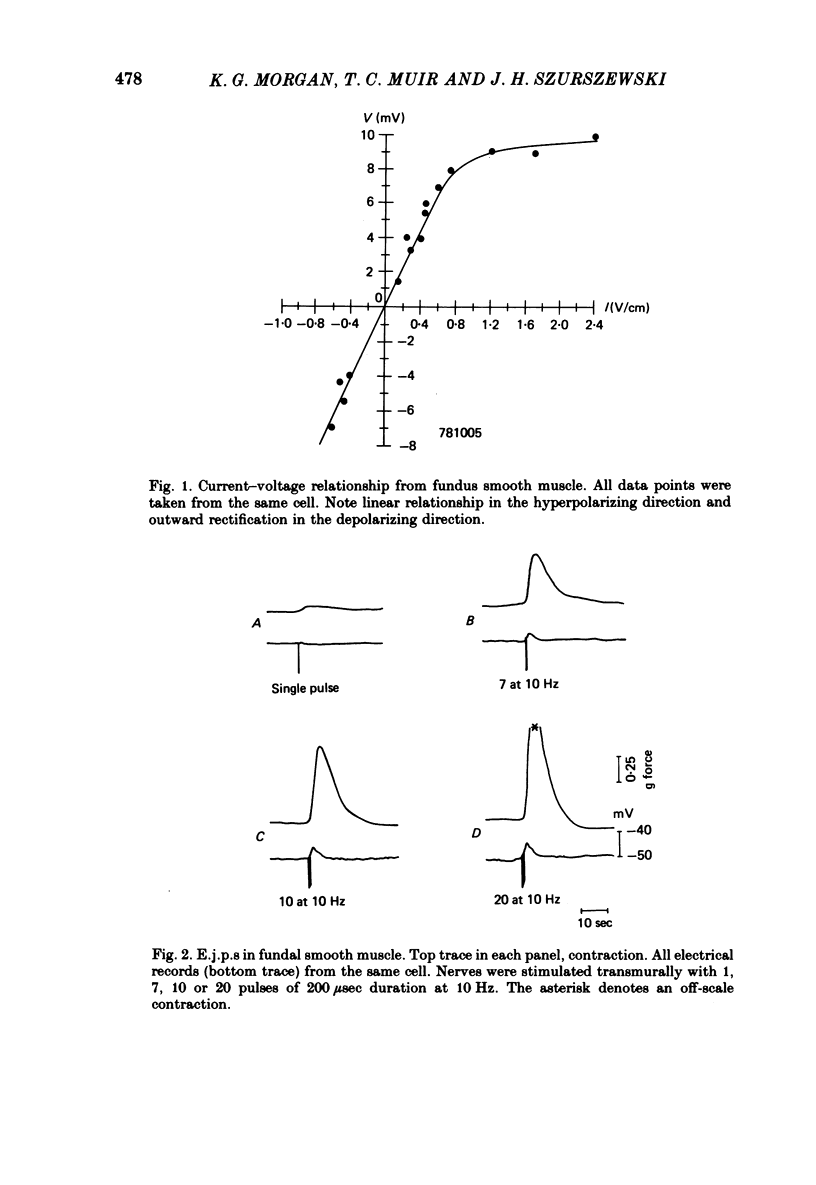
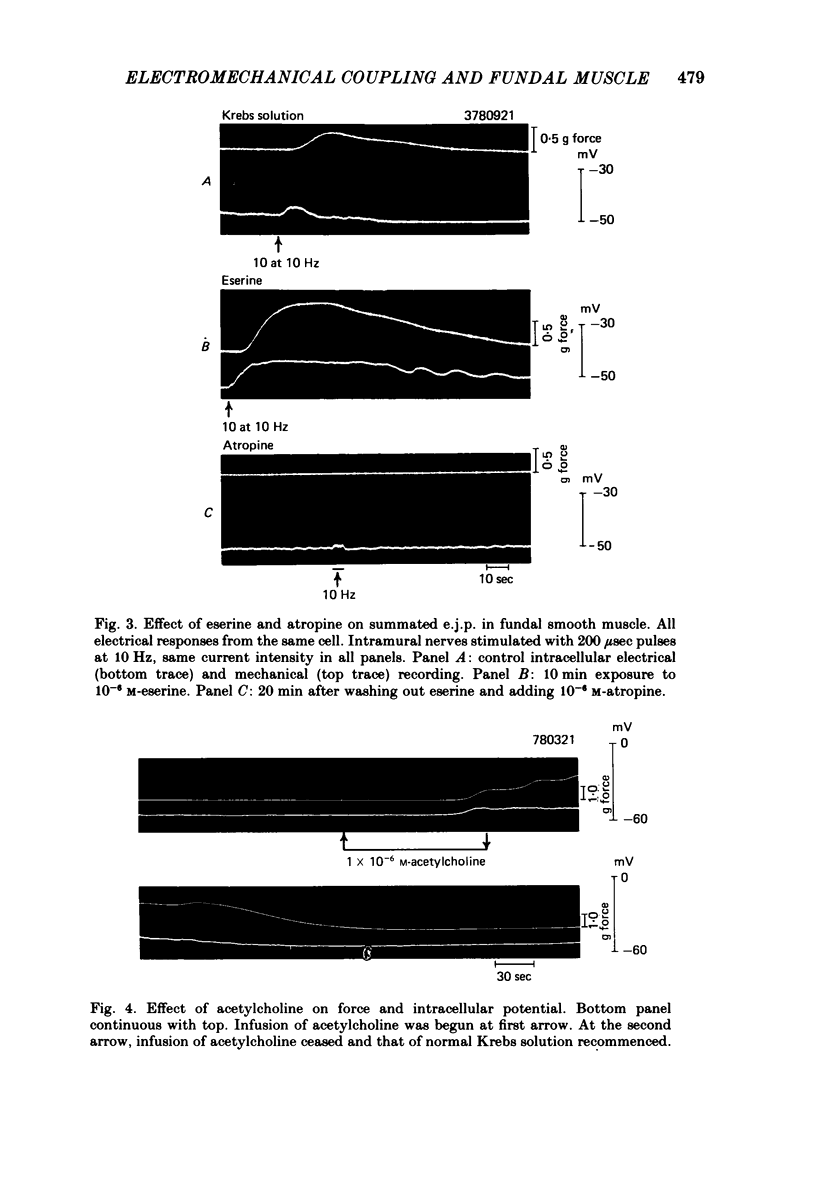
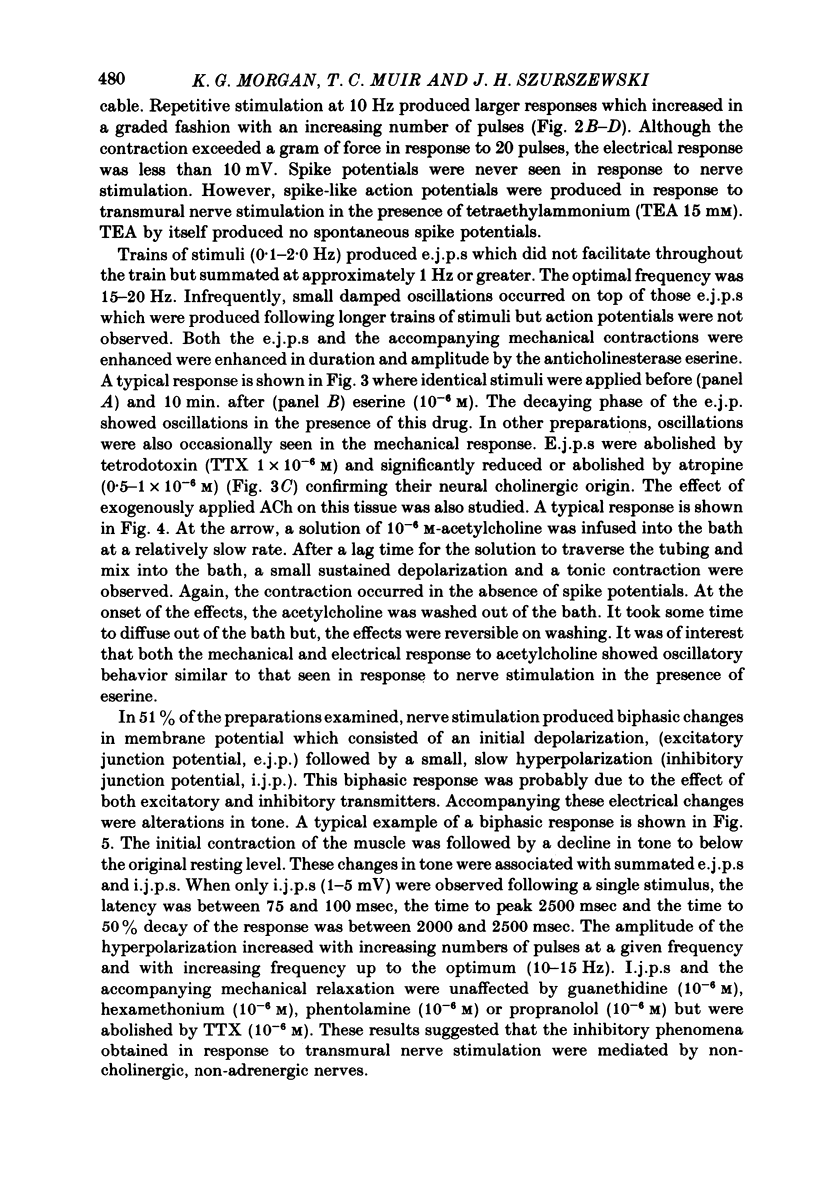
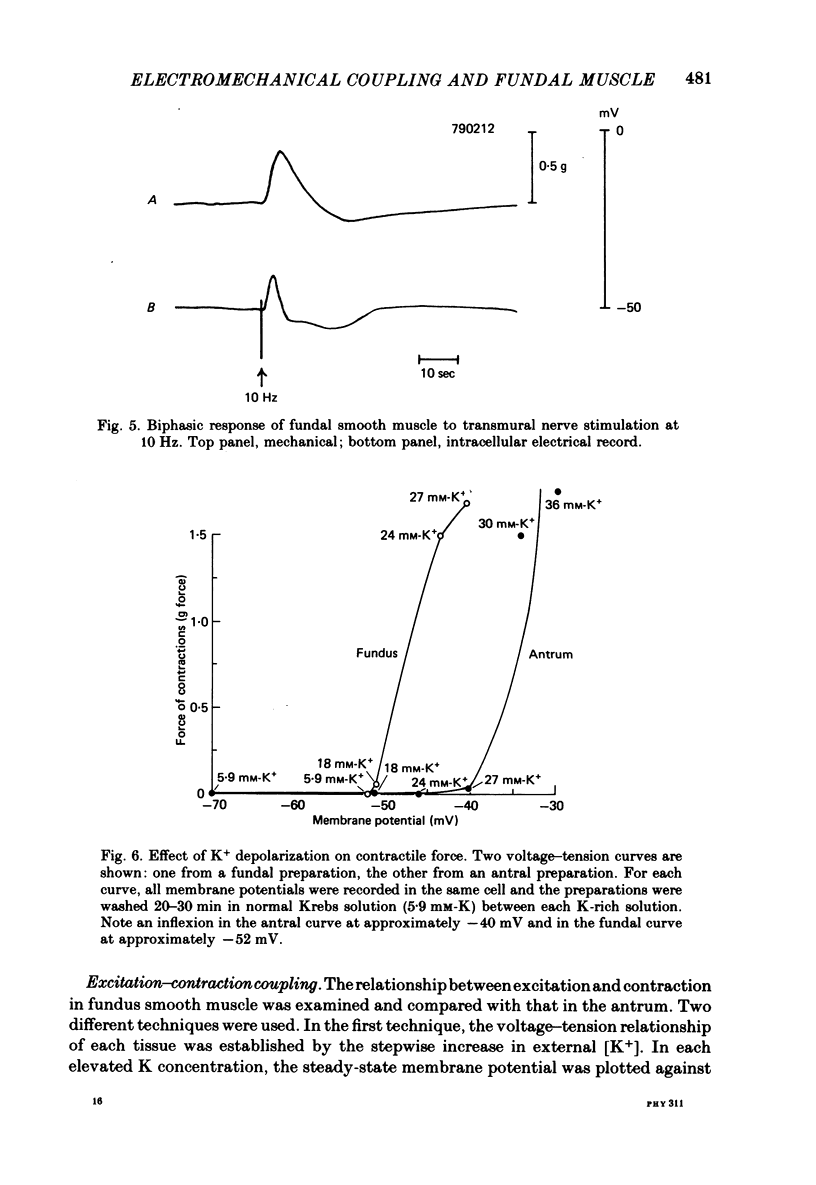
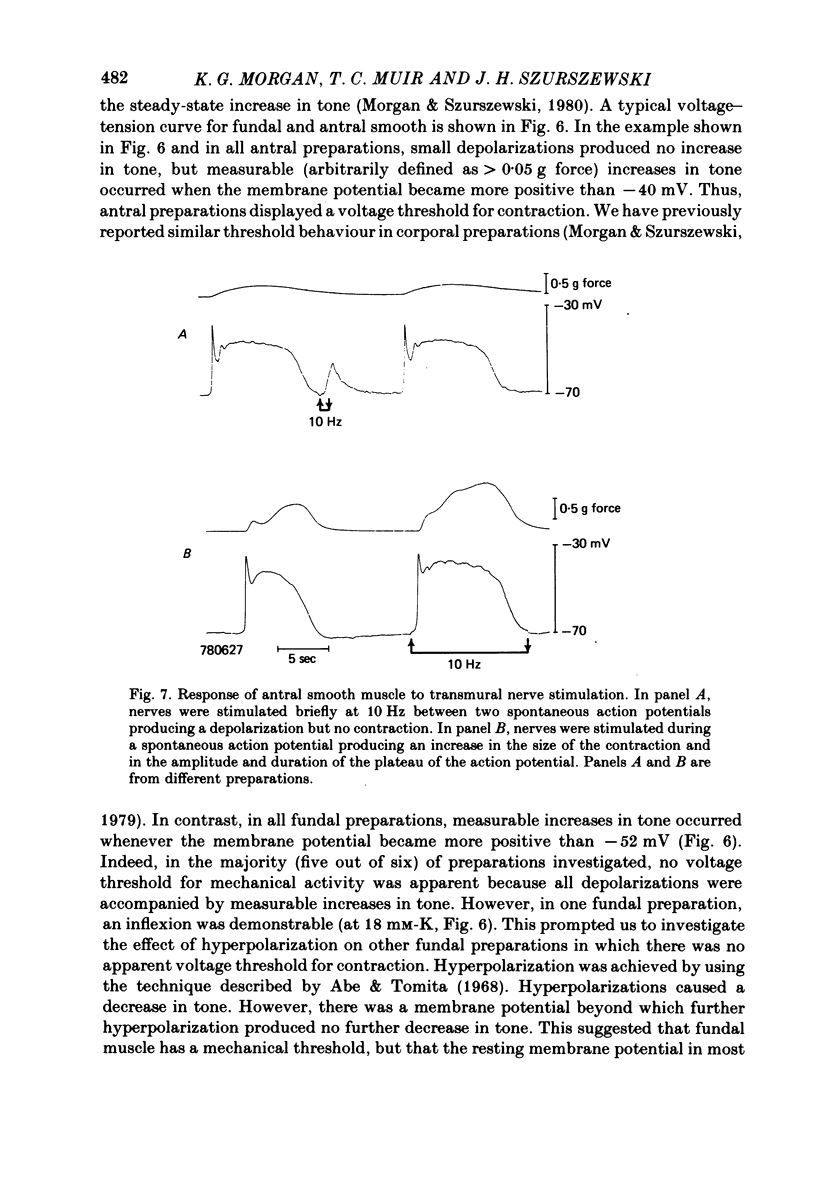
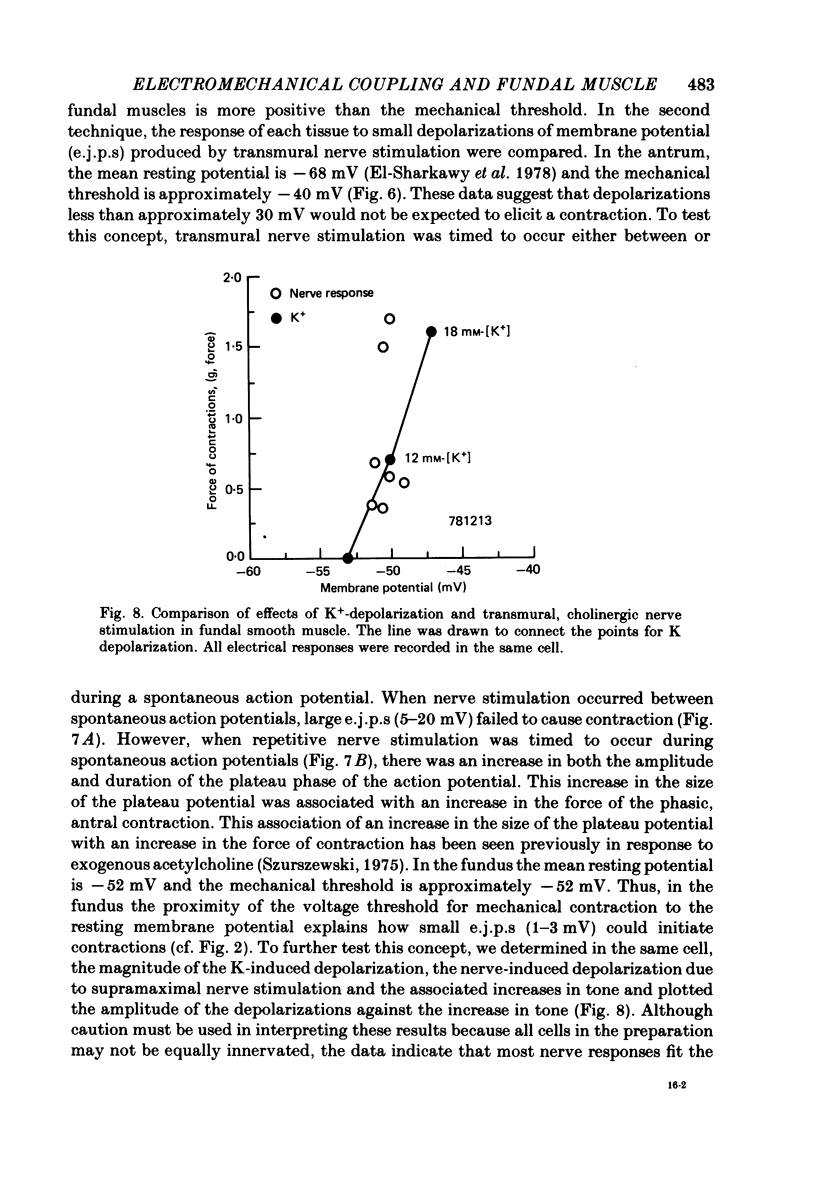
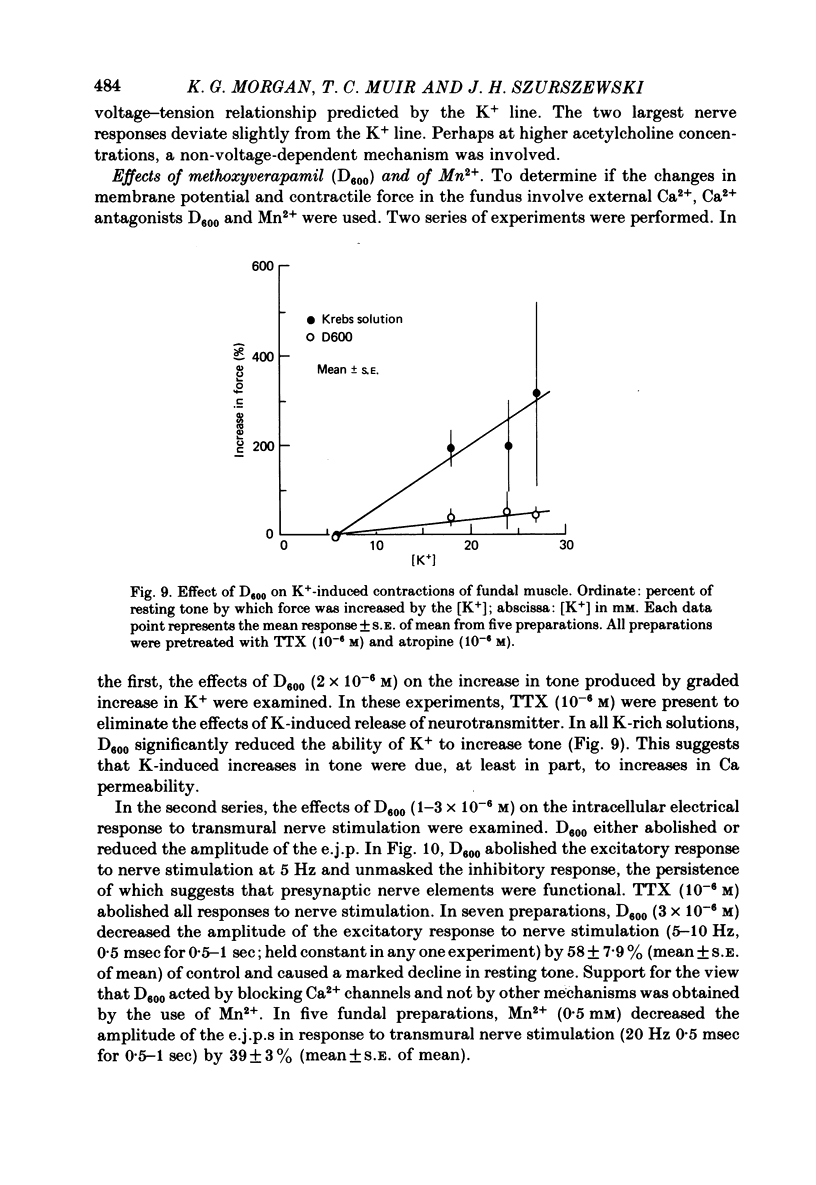
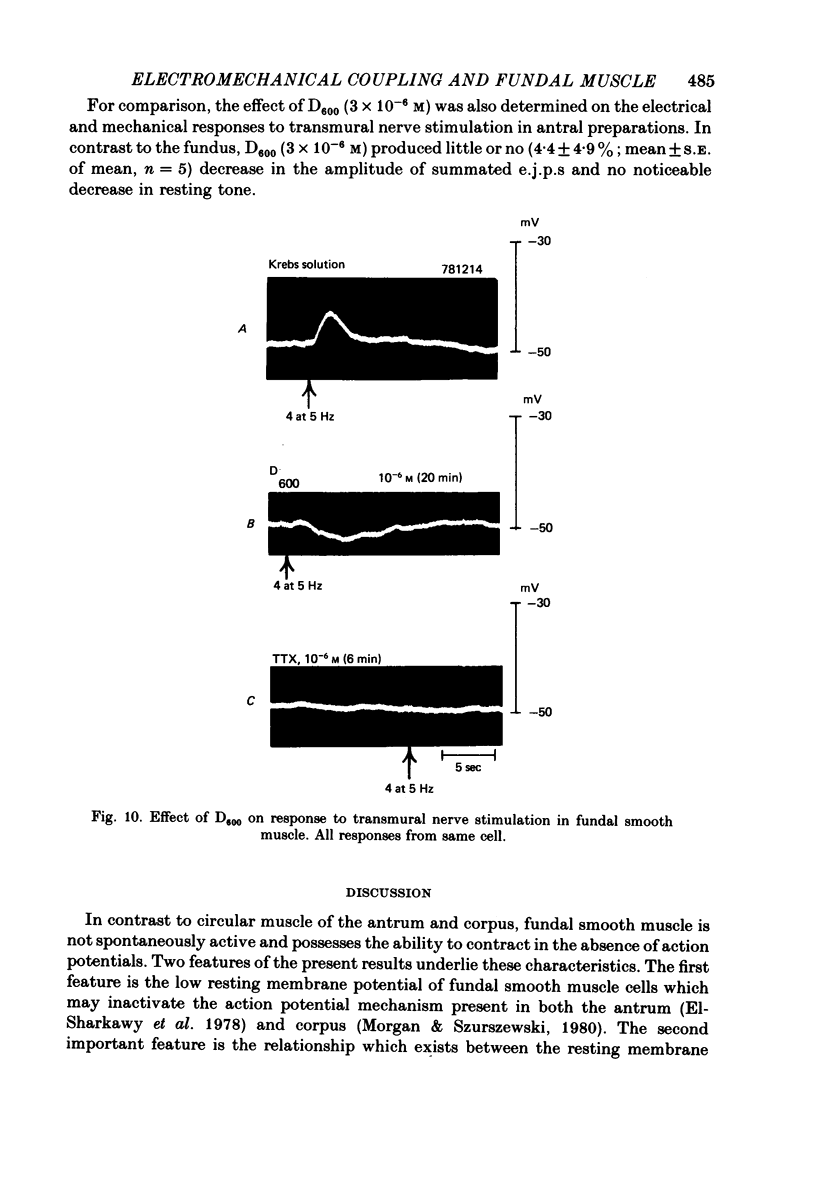
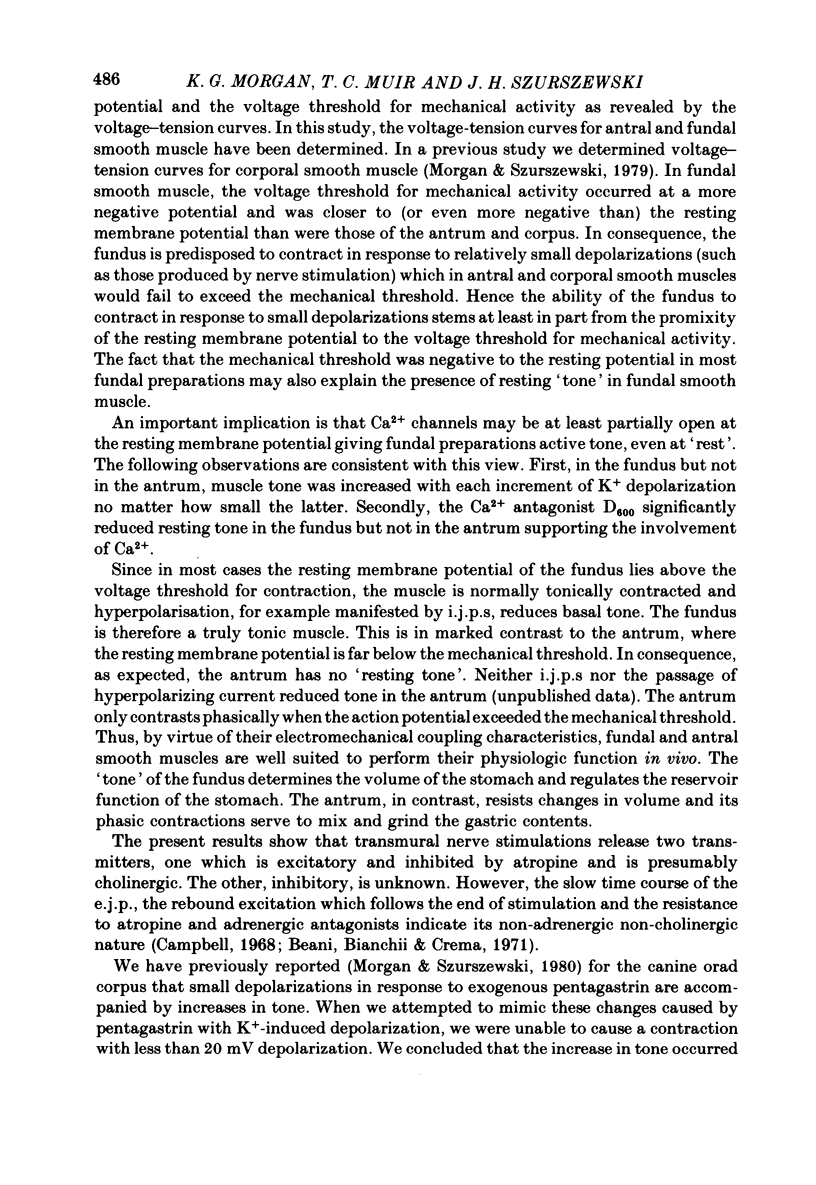
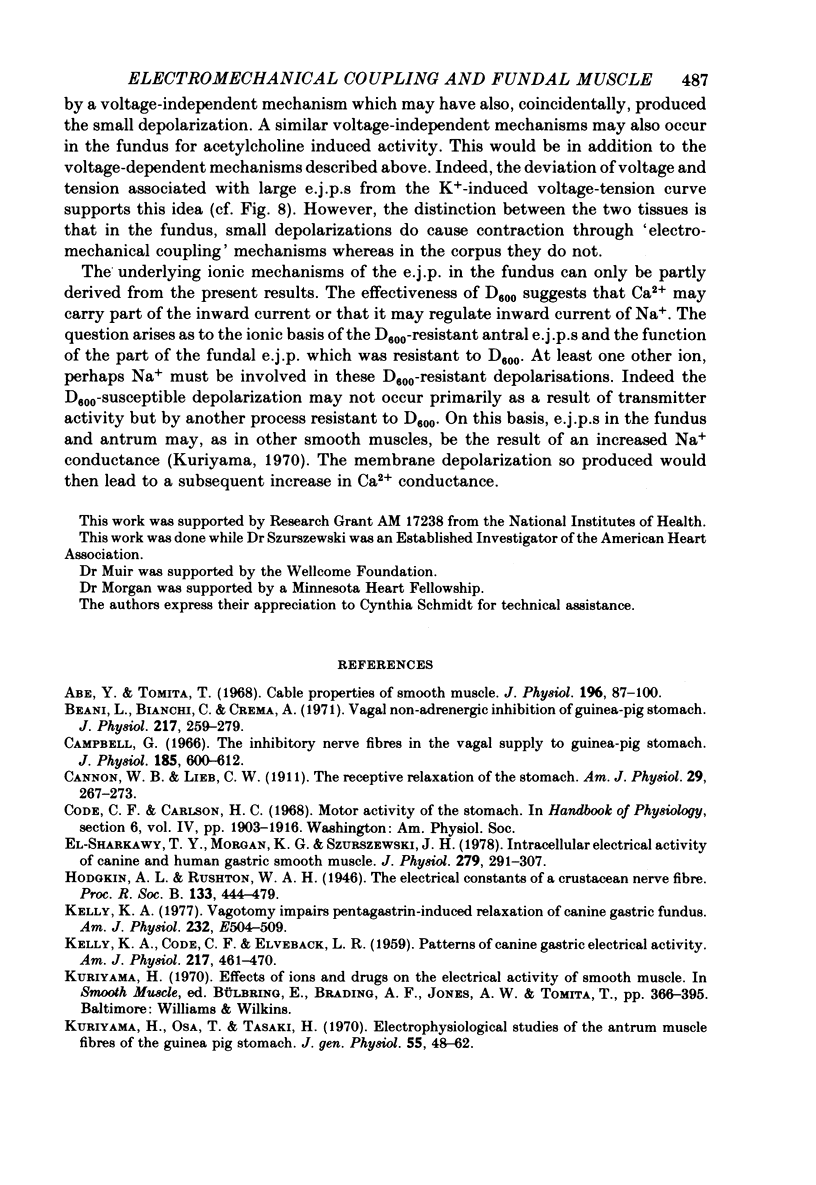
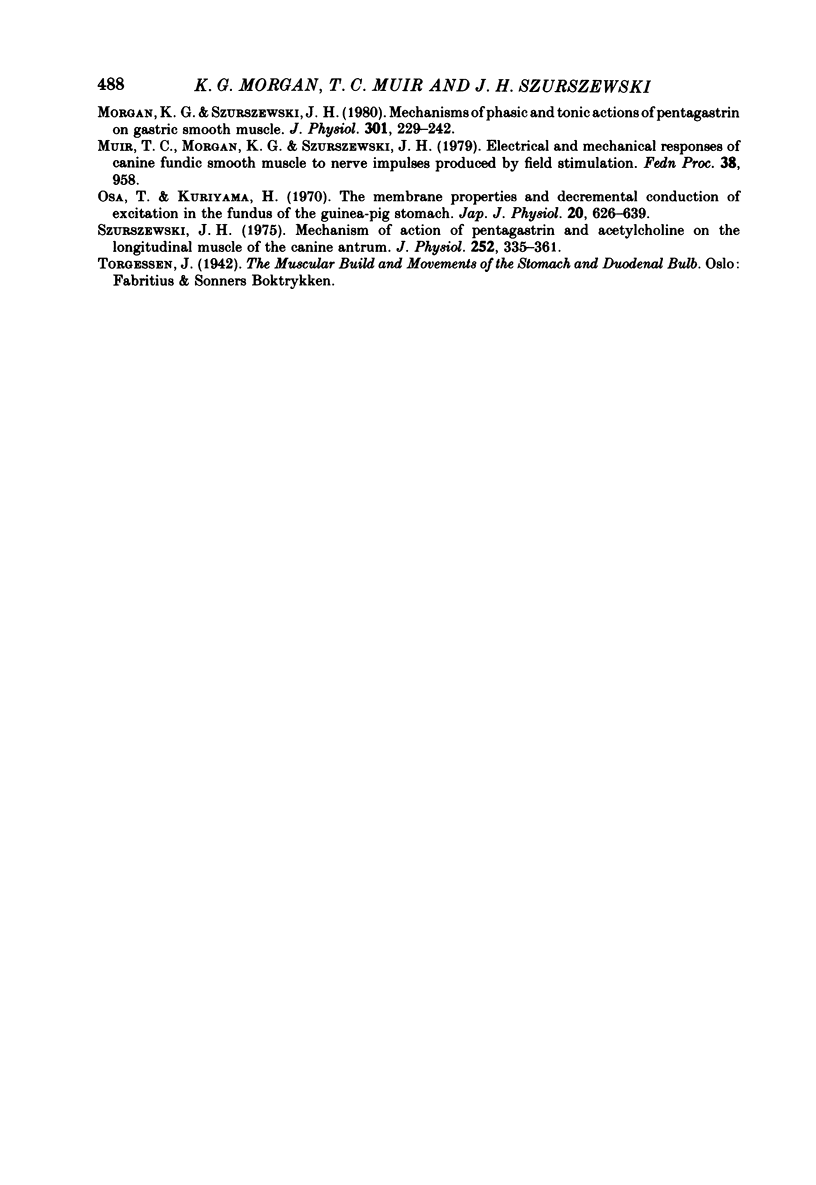
Selected References
These references are in PubMed. This may not be the complete list of references from this article.
- Abe Y., Tomita T. Cable properties of smooth muscle. J Physiol. 1968 May;196(1):87–100. doi: 10.1113/jphysiol.1968.sp008496. [DOI] [PMC free article] [PubMed] [Google Scholar]
- Beani L., Bianchi C., Crema A. Vagal non-adrenergic inhibition of guinea-pig stomach. J Physiol. 1971 Sep;217(2):259–279. doi: 10.1113/jphysiol.1971.sp009570. [DOI] [PMC free article] [PubMed] [Google Scholar]
- Campbell G. The inhibitory nerve fibres in the vagal supply to the guinea-pig stomach. J Physiol. 1966 Aug;185(3):600–612. doi: 10.1113/jphysiol.1966.sp008004. [DOI] [PMC free article] [PubMed] [Google Scholar]
- Kelly K. A., Code C. F., Elveback L. R. Patterns of canine gastric electrical activity. Am J Physiol. 1969 Aug;217(2):461–470. doi: 10.1152/ajplegacy.1969.217.2.461. [DOI] [PubMed] [Google Scholar]
- Kuriyama H., Osa T., Tasaki H. Electrophysiological studies of the antrum muscle fibers of the guinea pig stomach. J Gen Physiol. 1970 Jan;55(1):48–62. doi: 10.1085/jgp.55.1.48. [DOI] [PMC free article] [PubMed] [Google Scholar]
- Morgan K. G., Szurszewski J. H. Mechanisms of phasic and tonic actions of pentagastrin on canine gastric smooth muscle. J Physiol. 1980 Apr;301:229–242. doi: 10.1113/jphysiol.1980.sp013201. [DOI] [PMC free article] [PubMed] [Google Scholar]
- Okike N., Kelly K. A. Vagotomy impairs pentagastrin-induced relaxation of canine gastric fundus. Am J Physiol. 1977 May;232(5):E504–E509. doi: 10.1152/ajpendo.1977.232.5.E504. [DOI] [PubMed] [Google Scholar]
- Osa T., Kuriyama H. The membrane properties and decremental conduction of excitation in the fundus of the guinea-pig stomach. Jpn J Physiol. 1970 Dec 15;20(6):626–639. doi: 10.2170/jjphysiol.20.626. [DOI] [PubMed] [Google Scholar]
- Szurszewski J. H. Mechanism of action of pentagastrin and acetylcholine on the longitudinal muscle of the canine antrum. J Physiol. 1975 Nov;252(2):335–361. doi: 10.1113/jphysiol.1975.sp011147. [DOI] [PMC free article] [PubMed] [Google Scholar]
- el-Sharkawy T. Y., Morgan K. G., Szurszewski J. H. Intracellular electrical activity of canine and human gastric smooth muscle. J Physiol. 1978 Jun;279:291–307. doi: 10.1113/jphysiol.1978.sp012345. [DOI] [PMC free article] [PubMed] [Google Scholar]


